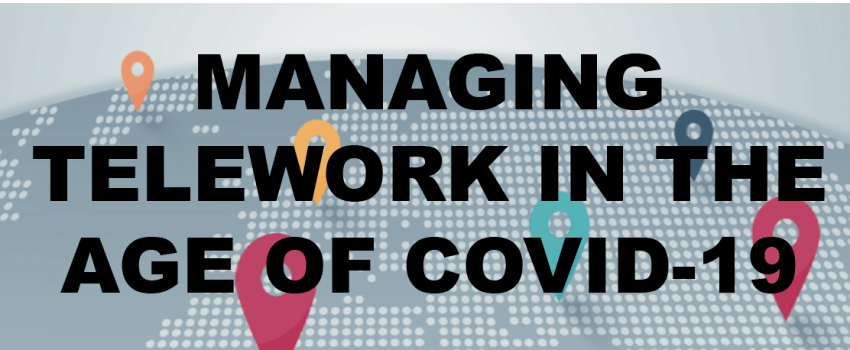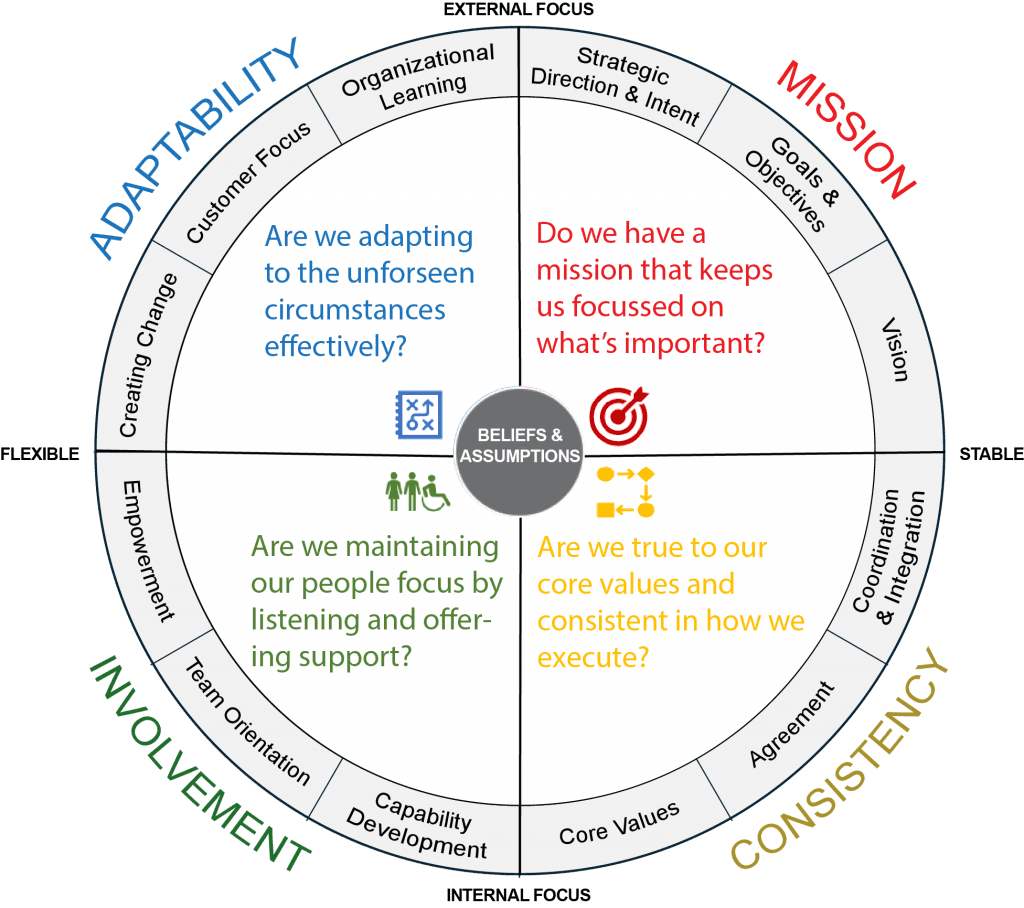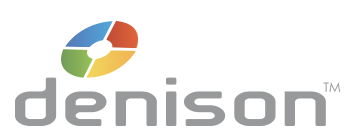
Managing Telework in the age of Covid-19
By Bryan Adkins Ed.D., CEO, Denison Consulting & Jasmit Kaur, Senior R&D Consultant
The last few weeks epitomize “uncertainty” in our global world. This Coronavirus (Covid-19) pandemic and our response impacts everyone on the planet, with changes on a daily basis. In our work life, the pandemic has forced companies to shift to telework whenever possible. We at Denison Consulting are in the business of helping companies to drive high performance through people and culture. A viral pandemic forces us to consider how organizational culture can facilitate telework, and how telework can nudge culture, all while employees are enabled to take care of themselves and their loved ones. This time, it’s really different.
Telework is nothing new. Practiced well, both employees and employers can reap its benefits and effectively get work done. As early as 1985, telework was described as the “next workplace revolution” (Kelly, 1985), and today, 62% of companies provide telecommuting opportunities (SHRM, 2017).
Occasionally, companies have decided to shrink their telework programs (Yahoo, Bank of America, Aetna, and IBM) for various reasons. Many companies cite issues related to collaboration or a belief among managers that being physically present at work is imperative for productivity and strong teamwork and collaboration. In fact, some studies indicate that a higher frequency of teleworking (more than 2.5 days a week) may have a negative impact on relationships with supervisors and co-workers (Gajendran & Harrison, 2007). In the Covid-19 world, we have lost the luxury of not teleworking. In the Covid-19 world, telework is the norm.
But the magnitude of teleworking under widespread social distancing policies is unprecedented. It brings a set of challenges that most organizations have never had to tackle. It is different in several key ways. First, telework is no longer a choice for employees. It is a requirement, a non-negotiable policy. Our consulting work with companies around the globe has shown that employees like to have a choice when it comes to whether, and how much, they are able to telework. Employees who have the choice to work from home but choose not to are more satisfied than those who are not provided the choice (and allowed not to work from home). Conversely, in the current time of enforced telework, some employees may be dissatisfied with the loss of control over where they work; even though they understand the need for it.
Second, telework breaks the physical boundary between work and personal life, and for some in the workforce, it will be a difficult adjustment. Physical environment helps employees enact the appropriate work role (Ahrentzen, 1990). Employees who either do not have a dedicated workspace and necessary equipment at home or who are used to working from alternative places like a coffee shop or a library (locations also inaccessible now), will find it challenging to adjust to a new way of working.
Third, employees with young children or aging, vulnerable family members must manage work while also looking after their family. Regarding simultaneous working-and-homeschooling, some research suggests that “work and child-minding are incompatible” (Standen, 2000; Olson, 1989). Employees who have children at home experience a role-conflict that leads to stress; “children can create stress even when the worker is not doing the caring” (Standen, 2000; Olson, 1989). Boundaries that employees are used to respecting between home and work life are blurred or completely eroded.
In this mandated telework environment, how can employees work effectively? And, how can organizations support their employees?
Culture Enablers for Mandated Telework
At Denison, our founder and chairman, Dan Denison reminded us that culture must be the foundation to working effectively during these times: “As leaders, we need to do all that we can to remind everyone of the importance of our core mission, and to clarify our direction for the future. We need to be as adaptable as we can, leaving behind our old habits, and building the new habits that we need for the future. We need to listen to our people more than ever and involve them as we work together to find the path forward. And we need to work hard to maintain our integrity, live our core values consistently, and pull together to meet the challenge.”

How effectively telework is mobilized at a company is very much dependent on organizational culture. It can challenge some basic beliefs and assumptions about where and how work gets done. Before implementation, it’s important to think about the broader culture and how it supports or inhibits the change. Companies with a strong culture can leverage their strengths. In times of crisis and change, a strong organizational culture reduces your vulnerability and becomes a tremendous asset.
The Denison Culture Model serves as a compass for navigating change by focusing on levers across four traits. First, the Adaptability of an organization ensures sensitivity and responsiveness to the changing needs of its customers, enables the continuous adoption of new ways of working, and translates uncertainty into understanding and learning. Second, a strong
Mission ensures that the organization remains focused and can prioritize action (and the flip side: knowing what to let go of). Clarity of purpose combined with specific strategies and goals turns aspirations into actions.
Third, adhering to core values (which can be truly tested in volatile times) and continuing to practice Consistency in execution will help the organization stay aligned. Finally, and most importantly, Involvement removes feelings of helplessness and promotes a belief that, as a team, we are capable of anything. And by taking care of employees in a way that they get the right support for themselves and their families, companies garner their loyalty and performance.
The Denison Culture Model prompts organizations to ask soul-searching questions across these four traits and to respond accordingly. Companies with strong cultures can navigate change more effectively because change is part of their DNA, not an event. Those with gaps in culture will struggle to adapt, but crises also present opportunity – an opportunity to nudge organizations and their cultures in a positive direction.
We believe that culture integration work is meant for those who are ready to roll up their sleeves, not cross their fingers. It is possible to more quickly and fully realize the desired synergies a merger or acquisition can offer. But to do so means that culture due diligence and integration cannot be an afterthought. Failure to get it right means that the promises made to the marketplace can come crumbling down into a smoldering heap of unmet expectations.
Culture awareness, understanding and management can be done with the same discipline that is often applied to the legal, financial, technological and operational integration efforts.
8 Culture-Driven Tips to Make Telework Successful
In the last 25 years of our consulting practice, we have conducted thousands of culture assessments across the globe. We have frequently explored ways to make remote workers more effective within their teams as well as the broader organizations in which they work. But as we discussed earlier, telework has an additional set of challenges in light of the current environment. This is where a culture-centered approach can ensure that telework is managed effectively in the age of Covid-19.
For example, within one week in which changes were happening almost by the hour, the University of Michigan went from banning large in-person gatherings to telework for all but a few critical roles. In the process, the communication was daily, and at multiple levels – president, division heads, group leads. As expected, when change is happening at such a fast pace, there was some confusion and misalignment between levels, but it was quickly caught because staff spoke up, and quickly corrected. The organization implemented a 2-week bank of paid sick leave for all employees. The management of the changes demonstrated that the organization has a strong decentralized decision-making culture, but a collaborative spirit among the divisions, which allowed for this complex coordination.
At our own organization, the leadership team made a decision about teleworking within a day. As a mark of agility, which is also a function of our small size, our IT manager quickly implemented a set of changes to ensure that we all had the best conferencing technology, process to triage our IT issues, and steps to access our data in a secure way. A close-knit culture in our own organization made employees feel comfortable if their children and pets popped up during work meetings. And as we telework, we look to our mission and core values to prioritize our work-related responsibilities, with customer focused deliverables taking precedence while practicing our core value of generosity to support our clients, communities and families.
Based on our consulting work and the robust data we have collected through the years, and recognizing that telework in the Covid-19 world is different, we are sharing eight tips for managers and employees on how to make telework effective for themselves and their teams.

The culture profiles generated provide a clear picture of where potential gaps exist and where best practices are evident. This data collection allows for input from employees in the respective organizations and involves them in the culture integration process. Everyone can quickly and easily become aware of the potential areas of clash and turn that awareness into specific plans for closing the gaps.
Some organizations are more experienced when it comes to managing employees who work remotely and have developed a culture based on the underlying belief that work can and does get done outside of the physical walls of the business. Others are now forced to adapt to the new face of telework. We strongly believe that the current realities are an opportunity to take important steps towards teleworking effectively and perhaps just as important, to develop a new level of agility and creativity in your organization. And in the process, you just might kickstart a cultural shift that makes the organization more adaptive to future unforeseen challenges.
“Like it or not, we are all in this together! It will take everyone’s efforts, all around the world, to work our way through this crisis and to build a new and better world on the other side of this challenge.”
Dan Denison, March 2020 (Stakeholder Message)
For questions related to this article, please contact:

Bryan Adkins
CEO, Senior Consultant
badkins@denisonculture.com

Jasmit Kaur
Senior R&D Consultant
jkaur@denisonculture.com
Connect with Insights from Denison
If you’d like to be kept up to date when we release a new TRANSFORM article or important piece of research, we can notify you so you have immediate access. Yes, please let me know.


